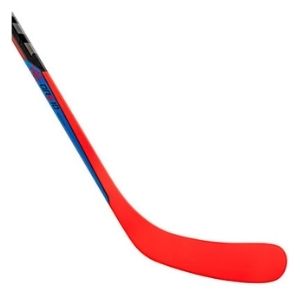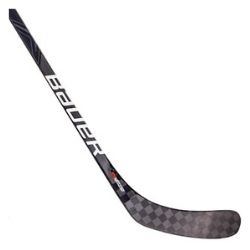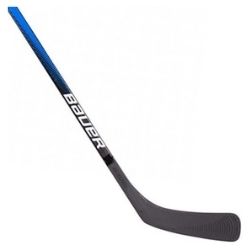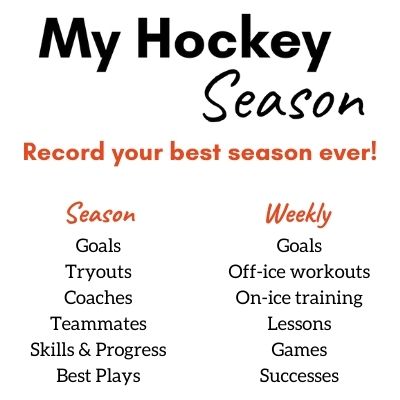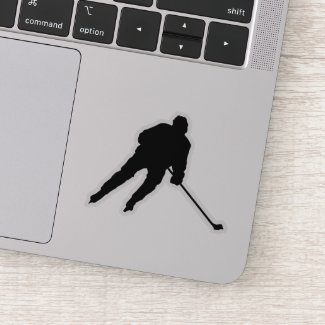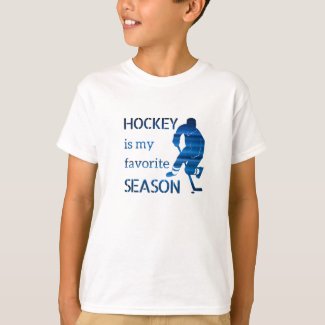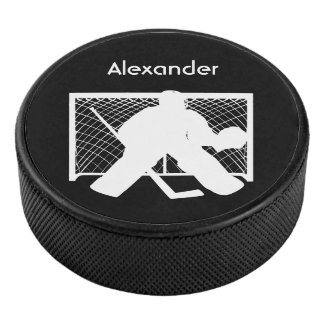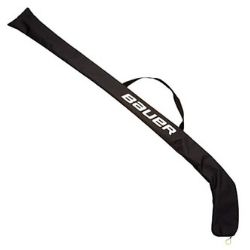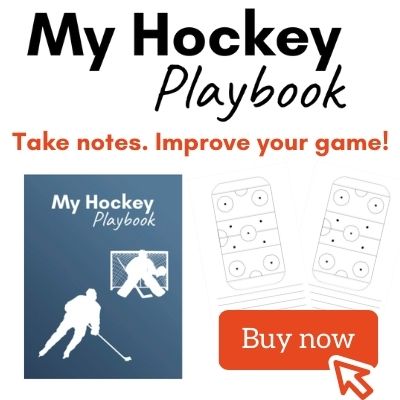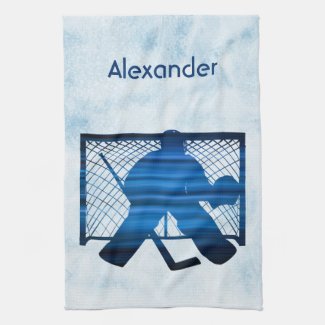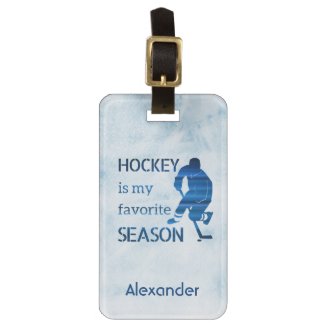Need an ice hockey stick for your little one to start learning skills and have fun?
Below is my guide to help you find the best youth hockey stick for your child with:
- criteria on how to choose a stick
- best current options and reviews for youth player
- answers to your frequently asked questions
- tips to take care of the stick and make it last longer
Note: if your child is junior, prefer my article about the best Junior hockey sticks.

This article contains affiliate links. If you purchase using my link, I get a commission at no extra cost to you (more info here).
Best youth hockey sticks - short answer
In the article below, I will enter into the details to help you choose the best youth hockey stick for your kid including:
- Key mistakes
- Criteria to properly choose
- Reviews of the best sticks
- Tips to take care of the stick and make it last longer
- Answer to your FAQs
But if you don't want to read the whole article, here is an overview of my selection of the best sticks for young kids:
Absolute beginner youth hockey sticks
1 - Warrior Covert QRE 10 youth hockey stick
Good quality affordable stick for absolute beginners
2 - Bauer Vapor Prodigy youth stick
Also good quality affordable stick for absolute beginners
Developing youth hockey sticks
3 - Bauer Vapor Flylite youth
Lightweight stick for developing young players
STX surgeon RX3 youth hockey stick
Great value-for-money
CCM Jetspeed Composite 40 youth
Feature-rich stick that can evolve with playing skills
Advanced youth hockey sticks
Bauer Nexus Geo Grip youth hockey stick
High-performance stick to support more advanced level of play
Bauer Supreme Ultrasonic youth hockey stick
Advanced level stick to support all-round play
For fun backyard play
Wood stick - Bauer I2000 Street youth hockey stick
Key mistakes to avoid when buying ice hockey sticks for kids
Before I explain all about the technical aspects that must be considered when buying hockey sticks for youth, let me warn you of two mistakes that you must avoid at all costs:
Overthinking it
Buying a youth hockey stick feels like an important decision for a parent to make. Yet, the one mistake most parents make is that of thinking too much about it.
Buying guides on the internet recommend you to consider multiple highly technical factors when deciding on which hockey stick to buy. However, these guides are written for seniors or experienced players.
For youth, the only primary advice I have for you is not to overthink the process.
You can buy a hockey stick that meets a few basic requirements. But beyond that, it is best to not worry too much about the technical aspects of the hockey stick because:
- Technical specifications are prescribed for seasoned hockey players and not for youth.
- Kids who are learning to play take some time to develop a specific style of play.
- Initially, kids’ biggest struggle is with balancing on skates. Hockey-specific strengths and weaknesses start appearing at a much later stage.
Therefore, please do not overanalyze the technical specifications when buying a hockey stick for kids. Initially, opt for a basic hockey stick, and as your child makes progress, you can buy one specifically tailored to your child’s style of play.
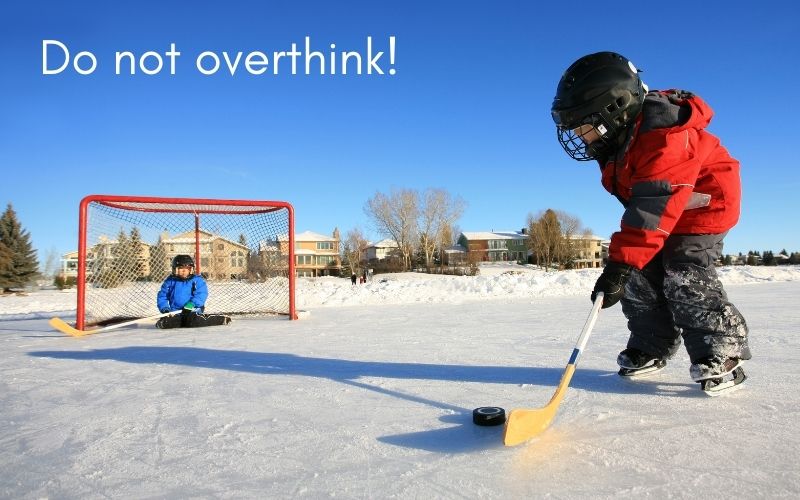
Not buying a youth-specific hockey stick
It is a common practice for many to give a short adult stick to kids believing that it would work exactly like a youth hockey stick.
Unfortunately, that’s not true at all.
You should always buy a youth hockey stick as it is specifically designed, considering
- the height,
- the weight,
- and the learning requirements of kids.
A short adult hockey stick would not work for kids because it won’t have a flex and length suitable for a child - i.e. When put to use, your kid will not be able to make it flex properly. Generating powerful shots would also prove to be challenging. (More information on this is given in the FAQ section below)
Criteria to choose the best youth ice hockey stick for kids
Now that you’re clear about what mistakes to avoid, let me dive into the only technical factors you should consider when buying a hockey stick for youth.
Size/Length
The size of a hockey stick essentially depends on its length. Hockey sticks come in three lengths.
- Short: Stays below the chin when wearing ice skates
- Regular: Stays just under the chin when wearing ice skates
- Long: Stays above the chin when wearing ice skates
Short sticks suit aggressive play styles, while long ones are a favorite among defensemen. However, for a kid learning to play, these lengths do not matter much.
Thus, initially, when your kid is an absolute beginner, you should buy a stick that stays just under your child’s chin. The right approach to determining the right size is:
- Make the child wear his/her ice skates.
- Measure the distance from the floor to just under your child’s chin
- Refer to the size chart and buy a length that corresponds with the measurement as closely as possible.
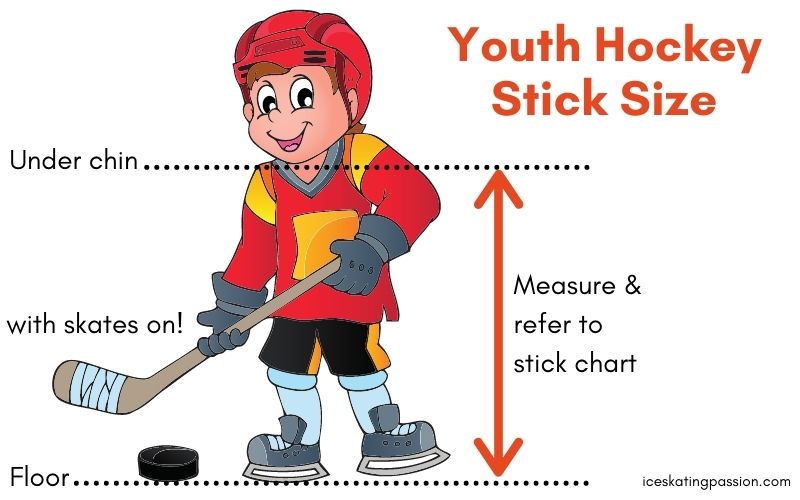
How to choose youth hockey stick size
Weight – Is lighter better?
When it comes to the relation between the weight of an ice hockey stick and its impact on the game, remember that-
- A lighter stick allows quicker shotmaking
- A heavier stick generates more powerful shots
These days, most manufacturers try to make sticks that can generate powerful shots while keeping the stick’s overall weight as low as possible.
For kids, hockey sticks that achieve this balance between lightweight and stiffness (power) are the most ideal:
- A stick that’s too light could impact control and dilute the power of the shot completely.
- On the other hand, a heavier stick would prove to be tiresome for a child learning basic shot-making.
One-piece vs. Two-piece stick
A one-piece hockey stick uses a single-piece construction for both the blade and the shaft of the stick.
A two-piece hockey stick uses two different pieces for the blade, and the shaft eventually joined together.
Modern technology has advanced considerably enough to make lightweight hockey sticks delivering high performance even when made using a single piece.
Thus, a one-piece stick would work better for a child as it would be lighter in weight and would still meet the child’s learning requirements.
Material
Traditionally hockey sticks used to be made using wood. However, today, wooden hockey sticks are rarely used when playing competitive hockey.
Composite sticks made using multiple high-performance materials such as carbon, fiber, aluminum, etc., are used.
It is best to opt for a composite stick for kids as they are more durable, lightweight, and effortlessly complement the modern style of play (but I have still included a wood option in the list if you want to stick with tradition...)
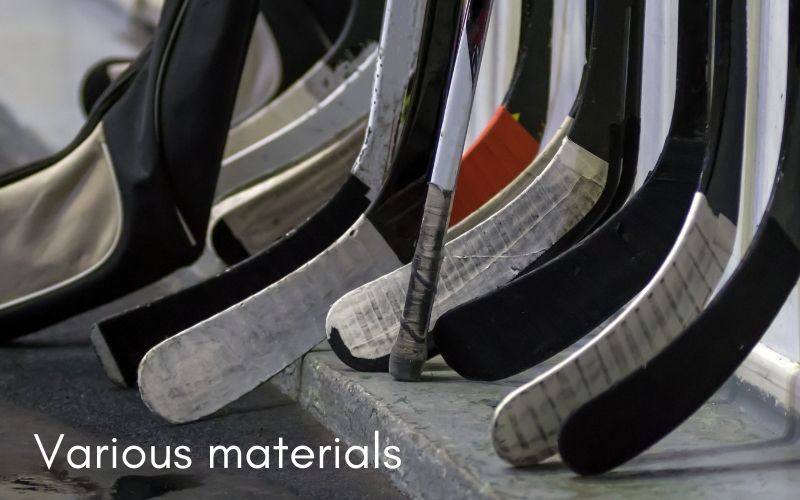
Left-handed vs. right-handed stick
Whether a stick is left-handed or right-handed depends entirely on its curve direction.
The curve direction is the direction in which your blade bends when looking down the stick’s shaft.
So here are the key rules:
- Left-handed player (keeps the left hand on top) - should opt for a right curve direction.
- Right-handed player (keeps the right hand on top) - should opt for a left curve direction.
Price
Price is a factor that most parents worry about the most when buying a hockey stick.
This is because hockey sticks are most susceptible to damage, especially during the initial learning days. Spending on a hockey stick every time may prove to be a considerable cost.
Thus when choosing a youth hockey stick for beginners, you can safely choose a basic hockey stick in the budget to mid-range. (Between 60-120 USD)
A mid-range hockey stick is built to provide adequate stability, speed, and balance. Thus, splurging on an expensive hockey stick till your kid’s playing skills improve is completely unnecessary.
Other technical aspects: Flex/Curve/Blade Pattern
As stated earlier, when buying an ice hockey stick for kids, technical aspects associated with the flex and the blade pattern are irrelevant.
However if you already want to understand, here are high level explanations:
- Flex is the amount of weight required to be exerted on the shaft for it to bend. This weight is specified in pounds.
- Blade pattern or curve technicalities refer to the depth of the blade curve, its face angle, or lie.
Only when your child develops a clear style of play and starts showing strengths and weaknesses should you consider these aspects. (If you would still like to read more about these factors now, you can read our master article on the best ice hockey sticks here - to be published)
Best Kids Hockey Stick (youth) - Reviews 2022
In this section, I will be reviewing some of the best hockey sticks for youth. I will specify the stick’s unique strength, general pros and cons, and a brief overview of the construction and design of the youth hockey stick.
Option 1 - Warrior Covert QRE 10 stick review
Weight: 305 grams
Material: Carbon Fiber
Why should you buy it? Affordable stick for absolute beginners
Pros:
- Perfect stick for young beginners
- Grip & smaller diameter fits small hands
- Lower flex promotes good stickhandling technique
- Affordable
- Attractive design
- Advanced variants of the same model available for upgrading.
Cons:
- Only suitable for absolute beginners
Comments:
This is the best ‘first stick’ for youth players. The design of this stick features an attractive color that stands out on ice. The design also appeals to young tots holding the stick for the first time.
The construction of this stick has been made specifically, keeping youth beginners in mind. Thus, it uses a soft, tacky grip on the shaft. The shaft, in itself, is also small in diameter. These features make holding the stick very easy for young players with small hands. In addition, the shaft uses a low flex that effortlessly loads shots with power.
For the blade, the Warrior Cover QRE 10 employs a W03 blade pattern. The W03 is a mid-curve, mid-depth, open angled blade that helps with lifting the puck. This blade and shaft combination also aids the development of stickhandling technique among players.
Overall, this affordably priced hockey stick delivers great value. It is the ideal stick to boost the skills and confidence of young players beginning their ice hockey journey.
Option 2 - Bauer Vapor Prodigy youth stick review
Weight: 382 grams
Material: Carbon Fiber
Why should you buy it? Great stick for learning hockey basics / recreational play
Pros:
- Excellent fused two-piece construction
- Flex and blade suitable for learning basics
- Good stick feel for better control
- Durable
- Affordable
Cons:
- Length variants may not suit everyone
Comments:
The Bauer Vapor Prodigy is a composite stick made using carbon fiber. The unidirectional carbon fiber construction allows an even flow of energy from the shaft to the blade and then on to the puck. The flex on this stick is low to quickly infuse the right amount of power in shots.
The blade used in this stick has a larger surface area and an open-angle. This allows a slightly heightened puck feel, making lifting, passing, and blocking easier.
Now, these features are important because they boost the confidence of young players learning new skills. From better puck control to better stickhandling, this stick has what it takes to keep young minds interested.
The only downside of this stick is its sizing. While it can be a great hockey stick for 5-year-old average sized-players, it may not work for younger and shorter kids.
However, overall, it's a durable stick that works well for young hockey players.
Option 3 - Bauer Vapor Flylite - youth stick review
Weight: 263 grams
Material: DuraFlex resin
Why should you buy it? Lightweight stick for developing young players
Pros:
- Lightweight
- Excellent puck-feel and pop with shots
- Ideal flex for development of accuracy and control
- Durable
- Affordable
Cons:
- Too lightweight for use as the first hockey stick
Comments:
When it comes to youth, buying a lightweight stick is often not recommended as it can result in loss of power in shots and the development of bad technique. However, the Bauer Vapor Flylite is an exception to that rule.
If you want a youth hockey stick for a slightly experienced player, the Bauer Vapor Flylite would be perfect for you. This is because Bauer has used the same fundamental construction of its elite senior level stick and modified it to suit the youth without making the stick bulky.
Thus Bauer has used the XE Taper technology, which gives a stable blade while keeping the stick extremely lightweight. The blade is infused with Aero SENSE 2 blade core which gives more pop to the shots of young players. The low flex on the shaft that uses a DuraFlex resin system (Same as senior variants) makes shotmaking feel natural.
In terms of durability, the stick outperforms many other lightweight sticks.
However, this stick is not recommended for absolute beginners as its lightweight technology is specifically crafted for young players who have been on the ice for a few sessions.
Option 4 - STX surgeon RX3 youth stick review
Weight: 425 grams
Material: 3K Carbon Fiber with Spear Construction
Why should you buy it? Most affordable yet value-for-money stick in the market
Pros:
- Budget-friendly
- Great blade for lifting
- Durable
- Excellent grip for controlled stickhandling and shot-making
- Attractive design for young players
Cons:
- A bit heavier than other sticks
Comments:
The STX Surgeon RX3 is an ice hockey stick that deserves a lot of attention.
This youth stick is one of the most reliable sticks in the market that comes at a super affordable price.
This stick employs a unique ergonomic shaft that maximizes the contact points on the shaft. Thus, the stick delivers an excellent grip for young players working on their stickhandling skills. The diameter of the shaft is also not too wide for small hands. The high balance point also assists with the overall stick feel.
Additionally, the flex allows extended energy load to get a quick release while also letting young players lean heavily on the shaft.
Finally, the blade’s curve and angle combine well with its stiff composition to give that added pop to every shot.
Thus, as an overall unit, this hockey stick deserves to be on this list for how budget-friendly it is and how well it suits the skill levels of growing youth.
Option 5 - CCM Jetspeed Composite 40 youth stick review
Material: SigmaTex
Why should you buy it? Affordable feature-rich stick that can evolve with playing skills.
Pros:
- Feature-rich design for an affordable price
- Stiff shaft specifically tailored for young players
- Full grip for controlled stickhandling
- Blade profile that aids youth-level shooting skills
- Durable
Cons:
- Too tall for 6U
Comments:
The CCM Jetspeed is one of the best youth hockey sticks available in the market, especially for slightly older youth players. At a length of 51”, the stick is taller than many other youth sticks and therefore may not suit very young kids.
But if your kid’s height supports the length of this stick, this stick has much to offer.
This stick uses the same elite-level CCM Jetspeed technology but refines it to suit a young player.
To begin with, it uses a full grip on the shaft. This gives greater control and stickhandling confidence to young players. The shaft on this stick employs its signature Sigmatex that cuts down the weight of the shaft but still adds sturdiness. The shaft allows even energy transfer to the blade and renders an impressive stick feel.
In terms of flex, this stick stands out for how stiff it is. The stiffness of this stick helps young players lean into their shots a bit more for that extra power. This nurtures the development of proper shot-making techniques from an early age.
Finally, the blade of this stick also impresses with its sturdy open profile. It allows confident lifting and better puck control.
Option 6 - Bauer Nexus Geo Grip youth stick review
Weight: 390 grams
Material: Duraflex resin + Asymmetrical TeXtreme
Why should you buy it? High-performance stick to support advanced level of play
Pros:
- Excellent flex and energy transfer to the blade
- Terrific stick feel for effortless shooting
- Improved puck feel for accuracy
- Supports advanced level of play
Cons:
- Not suitable for absolute beginners
Comments:
If your young child has enough experience in ice hockey and has developed playing skills that require an upgrade from a basic hockey stick, you should choose the Bauer Nexus Geo.
This stick is a youth hockey stick with technology that is capable of supporting advanced play skills. Thus, to enhance play efficiency in highly competitive sessions, this stick packs a great shaft, an ideal flex, and a dynamic blade.
The shaft uses the ER Spine, which gives the shaft a 5-sided structure that eliminates extra weight but keeps the sturdiness intact. The carbon fiber layers coupled with the flex point transfer energy to the blade very quickly. This aids with wristy shots and tight positions around the net.
The P88 blade is also ideal for an all-round style of play that helps not only with lifting but with quick passes as well. The shot accuracy also improves multifold thanks to the improved puck control.
Overall, if you want a top-quality stick for your little champ, this one is the best option for you.
Option 7 - Bauer Supreme Ultrasonic youth stick review
Weight: 390 grams
Material: Duraflex resin + Asymmetrical TeXtreme
Why should you buy it? Advanced level stick to support all-round play
Pros:
- Lightweight feel for effortless shotmaking
- Impressive grip and stick-feel
- Durable
- Excellent puck-feel
- Seamless, fast energy transfer
Cons:
- Not suitable for absolute beginners
Comments:
This stick is a great option for young players that have worked their way up the skill ladder and now play all-round hockey.
Although quite similar to the Nexus Geo, this stick is different mainly in terms of its kick point and durability.
This stick employs a high kick point that normally supports slap shots. However, given that this is a youth stick, the flex of this stick has been altered to load energy evenly and boost all types of shot-making.
Thus, where most youth hockey sticks are geared to enhance play close to the net, this stick backs up advanced players who like to take on longer shots.
In terms of the shaft, it uses DuraFlex resin construction to expedite energy transfer to the blade. The TeXtreme carbon fiber also makes this stick more durable than the Nexus Geo.
Finally, the blade on this stick uses the FastCore Blade that keeps the blade extremely lightweight for maximizing puck speed.
To round up, this stick is not meant for beginners but is a fantastic stick for advanced youth looking for a durable, lightweight stick.
Option 8 - Wood stick - Bauer I2000 Street Hockey Stick
Weight: 672 grams (56”)
Material: Wood shaft / Nylon blade
Why should you buy it? A cheap budget stick for absolute beginners - mostly to have fun on backyard rink
Pros:
- Cheap
- Great stick feel
- Adequate stiffness
- Ideal for beginners
Cons:
- Cannot be used once skills improve
- Not too durable
Comments:
If you want a stick to give your kid the first feel of ice hockey but don’t want to spend much on it, you should buy this wooden hockey stick.
This stick, being made of wood, furnishes an excellent stick feel. The diameter of the shaft is also perfect for small young hands. Finally, the stick is adequately stiff for young players to play powerful shots.
Thus, this wooden stick by Bauer can be safely used as an introductory stick. However, the stick doesn’t possess the technology needed to support league matches, competitive play, or even demanding sessions of practice on the ice.
For that, you may have to upgrade to a composite youth stick.
Tips to take care of the youth hockey stick & make it last longer
A youth hockey stick can damage easily if it is not looked after properly. Thus, you need to teach your kid the importance of hockey gear care.
The following rules must be followed to get the most out of your hockey stick:
Pre-use care:
- Use a bag:
A hockey stick must be stored in a hockey stick bag. This protects the stick from any unwarranted damages when the stick is stored and while commuting. - Write down initials:
Hockey sticks can get easily mixed up when stored in lockers before and after practice sessions. To avoid this, write your name or initials on your hockey stick before you start using it or storing it in lockers.
Taping
Taping a hockey stick has numerous benefits such as:
- Minimizing damage,
- Providing a good grip
- Improving puck-handling
A stick can be taped in three key areas:
- On the blade
- On the shaft
- On the butt
The best way of taping a hockey stick is:
- Start with fixing a piece of tape on the bottom end of the blade.
- After this, start wrapping the tape around the blade from the heel to the toe or the toe to the heel in an evenly overlapping manner.
- Follow this up by taping the shaft for better grip. To do this, let a large strip of hockey tape hang loose till it twists itself to form a rope. Now evenly space this rope around the shaft from the butt to about 6 inches below.
- Wrap the hockey tape on this rope grip in an even, overlapping manner.
- Pull out some hockey tape from the tape roll. Divide it in half widthwise. Use one-half of the tape to create a knob on the butt of the shaft by wrapping 6-8 layers of this hockey tape around it.
Initially, your kid would not be able to tape the stick by himself/herself, and you will either have to get expert help or do the taping of the stick for your kid.
Post-use care:
- Drying:
Like all ice hockey equipment, a hockey stick also needs to be completely dried off after every use.
A hockey stick must be dried at normal or room temperature without the use of any cooling or drying gadget and by leaving it on a hockey gear rack.
You will find hockey gear racks that can be easily wall-mounted and can be combined to hang multiple items
- Wrapping for non-ice use:
If you use your hockey stick on non-ice surfaces, it is important to wrap the stick’s blade using a blade protector. This protects the blade from damage and increases the life of the stick.
Check out this ‘hockey wrap around’ for details and price.
Additional care - Inspection
You need to check the hockey stick at frequent intervals for any chips or cracks. When detected at an early stage, chips or cracks can be easily filled in using epoxy resin glue. Moreover, early detection of chips or cracks prevents the stick from breaking and can save you considerable stick replacement costs.
If your child is using a wooden stick, please check the stick for splinters. Splinters, if any, must be removed immediately and the area retaped for protection.
Best hockey stick for kids - FAQs
How often do you replace a stick? When should you replace a stick?
There is no standard period after which a hockey stick must be replaced. The standard rule is that a hockey stick must be replaced every time it breaks.
Repairing a broken hockey stick is not recommended. Repairing completely modifies the length, curve, blade pattern as well as flex of the hockey stick.
Minor chips, cracks, or holes can be fixed, provided they are detected early. In such cases, replacement of the stick is not necessary.
Are expensive sticks worth it? How much should I put into my child's hockey stick?
Expensive sticks are built using high-quality material that supports specific playing requirements. This is exactly why elite-level players spend heavily on sticks.
But this does not mean that investing in an expensive stick for kids would result in better playing skills. On the contrary, kids learning basic hockey shots, balance, and position will derive almost no benefit from expensive hockey sticks.
Therefore it is best to opt for a basic to mid-range hockey stick for your kid. The price of a mid-range hockey stick is approximately between USD 80-150.
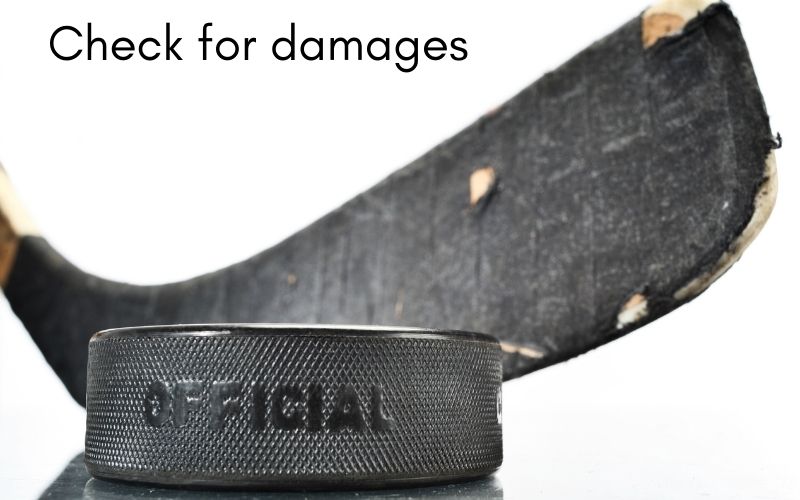
Can I purchase a second-hand stick?
As with most hockey equipment, it is advisable not to buy a second-hand hockey stick. A hockey stick is subject to maximum wear and tear, which could result in -
- Damaged blade
- Chips or cracks on the stick
- Damaged shaft
- Damages not clearly visible on account of taping.
Buying a used hockey stick can therefore expose your child to the risk of using a stick that’s not suitable for his/her height and weight. Moreover, using a damaged hockey stick will negatively impact growth and performance.
However, if you do not have the budget to buy a new hockey stick, you can buy a used hockey stick that has not suffered any damage only after it has been thoroughly examined by an expert.
What is the difference between youth and junior hockey sticks?
Youth hockey sticks and junior hockey sticks essentially differ in their length and flex.
Now, hockey sticks are categorized into four different categories based on age. However, this classification should only be treated as a guideline.
The only two factors that must be taken into consideration when buying a hockey stick are:
- Height of the player and
- Length of the stick
As stated above, a hockey stick must stay just below the player’s chin when the player is wearing ice skates.
Thus, generally, a youth hockey stick comes in a length that ranges between 38” to 49” while a junior hockey stick comes in a length that ranges between 50” to 54”.
Complete your kid's hockey equipment set!
- Best hockey gloves for players - read article
- Best hockey helmets - read article
- Best hockey laces - read article
- Best hockey mouthguard - read article
- And check out my 30+ tips for hockey moms - read article

